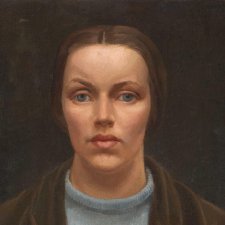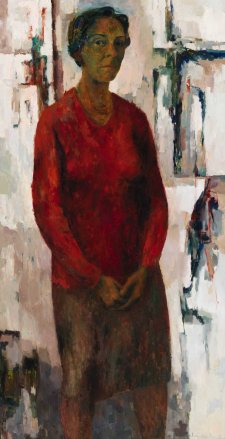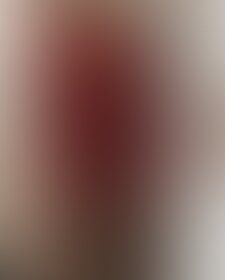- About us
- Support the Gallery
- Venue hire
- Publications
- Research library
- Organisation chart
- Employment
- Contact us
- Make a booking
- Onsite programs
- Online programs
- School visit information
- Learning resources
- Little Darlings
- Professional learning
Nora Heysen AM (1911–2003) was one of Australia’s most accomplished portrait artists. One of the eight children of landscape painter Sir Hans Heysen and his wife Selma (herself a talented artist), Heysen was encouraged to paint and draw from an early age. At fifteen, she enrolled at the School of Fine Arts in Adelaide, receiving there what she later remembered as an uninspiring and rigid brand of tuition. While still a student, she exhibited with the Society of Artists in Sydney and had examples of her work purchased by the state galleries of New South Wales and South Australia. She had her first solo exhibition, aged twenty- two, in 1933, by which stage she had demonstrated her remarkable skill as a portraitist. Heysen stated in 1994: ‘I wanted at that time to get away from my father’s subject matter. I turned to painting faces and painting myself… to get right away’ and to establish a sense of independence as an artist. She went to London in 1934, studying at the Central School of Art and the Byam Shaw School before returning to Australia. She moved to Sydney in 1938 and in that year won the Archibald Prize – the first woman to do so – with her portrait of Madam Elink Schuurman, the wife of a Dutch diplomat. In 1943 she became the first woman appointed to work as an official war artist, serving as Captain Heysen in New Guinea and Borneo, where she was sent to record the activities of servicewomen. While in New Guinea she met Dr Robert Black, whom she married in Sydney in 1953. The following year they purchased a house called The Chalet in the Sydney suburb of Hunters Hill, which was Heysen’s home for the remainder of her life. Heysen was in her seventies when the first retrospective exhibition of her work was held in South Australia; several similar exhibitions followed, including a major survey presented by the National Library of Australia in 2000–01.
This is one of a number of self portraits Heysen made in the early 1930s, but it is unusual amongst works from that period in its close-up, front-on perspective and minimal background. The portrait was in Heysen’s private collection until being purchased by the National Portrait Gallery in 1999.
Purchased 1999
© Lou Klepac
Self portrait by Nora Heysen was painted in 1938. It is an oil painting on canvas, 43 cm tall and 36 cm wide.
It is of Nora is her early 20s. It shows her head and shoulders. She’s gazing straight out on a minimal burnt-umber background. Her dark brown hair, parted in the middle, neatly frames her oblong face, covering her ears and tied behind her neck.
She has a prominent forehead, her right eyebrow forming a higher arch than the left, and her blue-grey eyes are large. The right eye’s gaze drifts wider than the centre.
Her nose is straight, her cheekbones flushed pale pink and her full rose-pink lips are closed. She has a wide neck and wears a powder-blue handknitted sweater with a modest, rolled collar. Around her shoulders hangs a thick chocolatey-brown overcoat. Light falls evenly over her face casting soft shadows.
Audio description written by Marina Neilson and voiced by Annette Twyman
Nora Heysen AM (age 23 in 1934)



On one level The Companion talks about the most famous and frontline Australians, but on another it tells us about ourselves.



National Portrait Gallery director Karen Quinlan AM nominates her quintet of favourites from the collection, with early twentieth-century ‘selfies’ filling the roster.



Jean Appleton’s 1965 self portrait makes a fine addition to the National Portrait Gallery’s collection writes Joanna Gilmour.